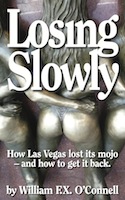The author of this piece, from The Wall Street Journal, can’t see the silver lining for the clouds, but all this seems to me to be a cause to celebrate: We are no longer hostages to the tendentious “professionals” of the news business:
On Sept. 11, 2001, there was no such thing as a YouTube video. Or a Facebook page. Or a Twitter feed. Cellphone cameras did not exist. Yet legions of people rushed to the site of the twin towers to document the attack and its aftermath. Their images, as much as those from stationary TV cameras or professional photographers, became our window onto the calamity. Meanwhile, countless others used their pagers, phones and PCs to enter firsthand reports of what things were like in Lower Manhattan. Thousands more, forwarding those accounts around the world, helped produce a people’s chronicle of 9/11 that corresponds with—rivals, really—the record seen on television and in print.
What was extraordinary that day has become thoroughly familiar. In 2011, when history happens, it is more often than not a nonjournalist with a pocket camera, a blog or a Twitter account who files the initial dispatch. It was a tourist with a camcorder who captured the first devastating waves of the Asian tsunami of 2004. A commuter with a mobile phone, riding the London Underground, took the first haunting frames of the transit bombings of 2005. Nowadays, history belongs to the first photographer to post the pictures of it.
This phenomenon was everywhere apparent during this year’s popular “Arab Spring” uprisings, from Tunis to Tripoli, and from Aleppo to the Gulf of Aden. In country after country, abuses were revealed via Facebook postings and YouTube videos. Protests, coordinated via social networks like Facebook, were spearheaded by young people, all of whom had grown up during the digital era. (More recently, both rioters and citizen-response groups in London and elsewhere have used mobile messaging services to mobilize.)
In retrospect, one can only imagine how the assaults of 9/11 might have been absorbed and magnified in the age of the smartphone, WiFi and streaming video. How might the attacks have further traumatized us had the technology existed to allow real-time visualizations of the deaths of thousands of innocents? How differently might the international community have reacted—or might historians have judged the actions of al Qaeda—had workers, trapped inside the World Trade Center, used the cameras on their hand-held devices and computers to record scenes of atrocity and carnage, then beamed those photos and videos to their families?
Instead of a panoramic view of mass murder, witnessed from a distance, would we have seen individual lives extinguished one by one, and irrefutably, in the here and now? And to what end? How, one wonders, would we have handled such images, given the breadth of the horror and the unspeakable depth of the loss?
It is hard to imagine that we would have wanted a more detailed account of the awfulness of that day. Even so, it is hard to suppose that we would rather have learned about the facts of September 11 through the next morning’s newspapers. Ten years after, we don’t just expect a crowd-sourced profusion of digital images to accompany a significant event as it unfolds; for better for worse, we demand it.










